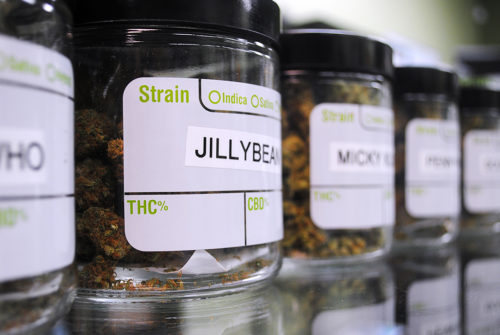By JACQUELYN SILVERMAN
Arizona Sonora News Service
Pot or not?
That is basically the question Arizona voters will have to decide on Election Day, when the Regulation and Taxation of Marijuana Act will appear on the year’s ballot and the issue is whether to legalize the recreational sale and use of marijuana in Arizona.
Here’s what voters need to know about Proposition 205.

An overall evaluation here is from the Ballotpedia website, which also contains the full text of Proposition 205.
The initiative would allow for adults 21 and older to consume marijuana in private, possess up to one ounce at a time, and grow up to six plants in their homes without a license.
It will establish a 15 percent sales tax on retail marijuana.
Carlos Alfaro, the deputy campaign manager for the “Vote YES” on Proposition 205 campaign, explained how the tax revenue would be divided up. Forty percent will go towards K-12 education and teacher salaries; the other 40 percent is for all-day kindergarten programming, and the remaining 20 percent will go to education programs to teach youth about marijuana, alcohol and tobacco safety.
It’s also important to note what the initiative will not do.
It will not allow for people to light up in public or drive under the influence of marijuana. It will not affect employers’ current marijuana policies or workplace restrictions. In general, the initiative will legalize marijuana in a way similar to alcohol.
In addition, the 15 percent retail tax will not be enacted on the sale of medical marijuana. Prop 205 will not change or affect the rights of medical marijuana patients.
So what’s the catch? “The biggest problem is teenage use,” said Ed Gogek, a psychiatrist specializing in addiction medicine. “The marijuana industry is designed to attract teenagers. You go into a dispensary in Colorado, most of the shelves are filled with edibles, which is cookies, candy and soda-pop infused with marijuana.”
The initiative is detailed about how marijuana products would be packaged. Warning labels will be required on all products, including the potency, serving sizes and a list of ingredients.
“We have things around us already that are legal,” said Alfaro, “Look at Tylenol. Kids are taking it and dying from it because it’s cherry-coated. Things like detergent packets. Those are also swallowed by children. Marijuana has never killed anybody. It’s nontoxic. We do agree that there has to be regulation around it. They do it with alcohol, and it makes no sense not to do it with marijuana.”

“I don’t have any problem with them changing packaging,” said Jeff Schaeffer, executive director of PARC Dispensary in Phoenix. “For all I care, you can put a skull and crossbones on it to make sure it’s known that it isn’t candy.”
Recreational marijuana is currently legal in Alaska, Colorado, Oregon, Washington, and the District of Columbia. As ballot initiatives arise, opponents of legal marijuana battle hard, and in some cases are supported by donations from corporations with vested interests.
For example, The Washington Post reported recently that the campaign against legalized marijuana in Arizona received a $500,000 donation in early September from an Arizona company that makes synthetic cannabis for the treatment of some cancer symptoms.
For a glimpse into Arizona’s pot future, we can take notes from our neighbor to the northeast, Colorado.
Since the first retail marijuana stores opened in Colorado in January 2014, there has been a drop in crime rates and traffic fatalities and an increase in jobs, according to a study by Drug Policy Alliance, a national advocacy leader of drug law reform.
The same study shows that in the first 11 months of 2014, burglaries decreased by 9.5 percent, property crime by 8.9 percent and violent crimes by 2.2 percent. In that time period, about 16,000 jobs were created in the Colorado marijuana industry.
Colorado implements a similar retail tax that Prop 205 would enact.
According to the Colorado Department of Revenue, within the first ten months of legalization, revenue from the retail tax amounted to $40.9 million. That number doesn’t include revenue from medical marijuana sales, only recreational.
Ryan Hurley, the official attorney for the campaign, said that in the first year of legalization in Arizona, the 15 percent tax would bring in a projected $72 million.
What are the chances Prop 205 passing? According to Hurley, it’s going to be pretty close.
A poll conducted by the Arizona Republic last month found 50 percent of voters favor legalization, 40 percent oppose it and 10 percent are undecided.
“When we look at Colorado’s numbers, they weren’t at over 50 percent [in favor of legalization] until the last month of the campaign,” said Alfaro. “So we’re actually ahead and it’s looking pretty good.”
Download high resolution images here.
 Jacquelyn Silverman is studying journalism and communication and hopes to work in publicity for a film studio after college. She is from Scottsdale, Arizona, and in her free time she likes to travel and try new restaurants.
Jacquelyn Silverman is studying journalism and communication and hopes to work in publicity for a film studio after college. She is from Scottsdale, Arizona, and in her free time she likes to travel and try new restaurants.


